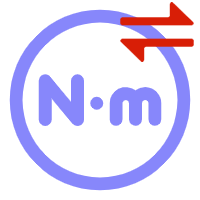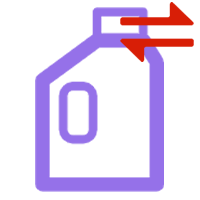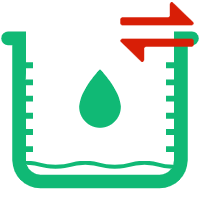
Ounces to Milliliters Converter
Convert ounces to milliliters instantly with our volume converter. Perfect for cooking recipes, baking measurements, liquid measurements, beverage preparation, and kitchen conversions. Get accurate results.
Ounces to Milliliters Converter
Enter fluid ounces value and click Convert to get milliliters.
Enter the value to convert
Relationship Between Fluid Ounces and Milliliters
The conversion between US fluid ounces and milliliters is based on the relationship where 1 US fluid ounce equals approximately 29.5735 milliliters.
1 fl oz (US) = 29.5735 mL
Therefore,
1 mL ≈ 0.033814 fl oz (US)
To convert fluid ounces to milliliters, we multiply the value in fluid ounces by 29.5735.
For example, 8 fluid ounces equals approximately 236.588 milliliters (which is 1 cup), 16 fluid ounces equal 473.176 milliliters (1 pint), and 32 fluid ounces equal 946.353 milliliters (1 quart).
Note: This converter uses US fluid ounces. UK (Imperial) fluid ounces are slightly different, where 1 UK fl oz = 28.4131 mL.
Fluid Ounce (fl oz)
What is a Fluid Ounce (fl oz)?
A fluid ounce (abbreviated as fl oz, fl. oz., or oz. fl.) is a unit of volume in the imperial and United States customary systems of measurement. Despite its name, it is not a measure of weight but of volume. The US fluid ounce is defined as 1/128 of a US gallon, which equals approximately 29.5735 milliliters.
History and Origin of the Fluid Ounce
The fluid ounce has its origins in medieval England, where it was originally based on the volume occupied by one ounce (weight) of water. Over time, different regional standards emerged. The US fluid ounce became standardized as part of the US customary system when the United States established its measurement standards in the 19th century, based on the earlier English wine gallon.
US vs UK Fluid Ounces
There are two different fluid ounce measurements:
US Fluid Ounce: 1 fl oz = 29.5735 mL (used in the United States)
UK (Imperial) Fluid Ounce: 1 fl oz = 28.4131 mL (used in the United Kingdom and Commonwealth countries)
The difference is about 4%, which can be significant in recipes and formulations. This converter uses the US fluid ounce standard.
Common Fluid Ounce Measurements
- 1 fl oz: About 2 tablespoons or 6 teaspoons
- 2 fl oz: 1/4 cup or 4 tablespoons
- 4 fl oz: 1/2 cup
- 8 fl oz: 1 cup (standard measuring cup)
- 16 fl oz: 1 pint or 2 cups
- 32 fl oz: 1 quart or 4 cups
- 128 fl oz: 1 gallon or 16 cups
Modern Applications of Fluid Ounces
- Beverages: Drink sizes (8 oz cup, 12 oz can, 20 oz bottle)
- Cooking & Baking: Recipe measurements in US cookbooks
- Nutrition Labels: Serving sizes on food and beverage products
- Baby Formula: Bottle measurements for infant feeding
- Cosmetics: Perfume, lotion, and beauty product volumes
- Medicine: Liquid medication dosages
- Bar & Restaurant: Cocktail recipes and drink servings
- Coffee & Tea: Espresso shots and beverage sizes
Fluid Ounces in Different Countries
The fluid ounce is primarily used in:
United States: Standard unit for liquid measurements in daily life
United Kingdom: Still used alongside metric, though officially metric
Canada: Rarely used; officially metric but sometimes on packaging
Australia & New Zealand: Phased out in favor of milliliters
Most other countries use the metric system exclusively and measure liquids in milliliters and liters.
Milliliter (mL)
What is a Milliliter (mL)?
A milliliter (symbol: mL or ml) is a unit of volume in the metric system, equal to one thousandth of a liter (1 mL = 0.001 L). It is also equal to one cubic centimeter (1 mL = 1 cm³). The milliliter is widely used worldwide for measuring small volumes of liquids, particularly in cooking, medicine, and laboratory settings.
History and Origin of the Milliliter
The milliliter is part of the metric system, which was developed in France in the late 18th century during the French Revolution. The prefix 'milli-' comes from the Latin 'mille' meaning thousand, indicating one thousandth of a liter. The metric system was designed to provide a decimal-based, universal system of measurement that would be easier to use than the various regional systems that existed.
Modern Applications of Milliliters
- Cooking and Recipes: Standard measurement in most countries outside the US
- Medicine and Pharmacy: Liquid medication dosing and prescriptions
- Laboratory Work: Precise liquid measurements in scientific experiments
- Beverages: Drink volumes on product labels worldwide
- Automotive: Engine oil, coolant, and fluid measurements
- Cosmetics: Perfume, lotion, and beauty product volumes
- Baby Formula: Infant feeding measurements (especially in metric countries)
- Chemical Industry: Precise mixing and formulation
Advantages of Milliliters
Milliliters offer several advantages as a measurement unit:
Decimal System: Easy conversions within the metric system (1,000 mL = 1 L)
Universal Standard: Used worldwide in most countries
Scientific Precision: Accurate for small volume measurements
Medical Standard: Preferred for dosing medications safely
Simple Calculations: No complex fractions like 1/8, 1/16, etc.
The milliliter's simple relationship with the liter makes it particularly easy to convert between different volumes in the metric system.
Fluid Ounce to Milliliter Conversion Table
The conversion of fluid ounces to milliliters for certain values are provided below:
- Fluid Ounces [fl oz]
- Milliliters [mL]
- 0.5 fl oz
- 14.79 mL
- 1 fl oz
- 29.57 mL
- 2 fl oz
- 59.15 mL
- 4 fl oz
- 118.29 mL
- 6 fl oz
- 177.44 mL
- 8 fl oz
- 236.59 mL
- 10 fl oz
- 295.74 mL
- 12 fl oz
- 354.88 mL
- 16 fl oz
- 473.18 mL
- 20 fl oz
- 591.47 mL
- 24 fl oz
- 709.76 mL
- 32 fl oz
- 946.35 mL
- 40 fl oz
- 1182.94 mL
- 48 fl oz
- 1419.53 mL
- 64 fl oz
- 1892.70 mL
- 80 fl oz
- 2365.88 mL
- 96 fl oz
- 2839.06 mL
- 100 fl oz
- 2957.35 mL
- 128 fl oz
- 3785.41 mL

Conversion Calculators














































